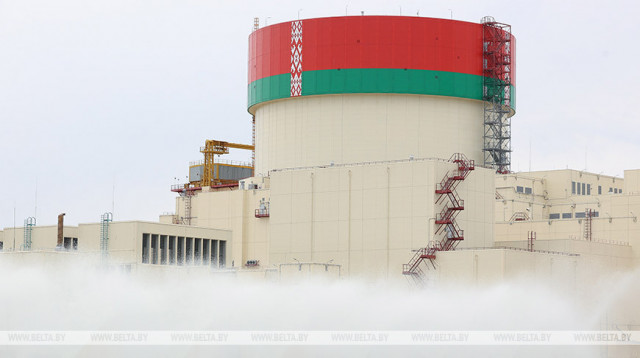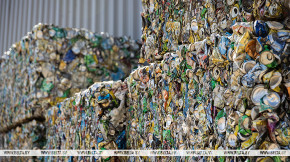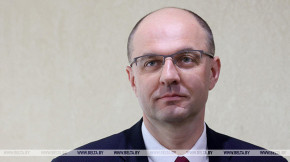Belarus' current radioactive waste types identified

MINSK, 4 November (BelTA) – Svetlana Shestovskaya, a department head with the Nuclear and Radiation Safety Department of the Belarusian Emergencies Ministry (Gosatomnadzor), spoke at length about what kinds of waste exist in Belarus at a meeting held in Minsk on 4 November to discuss the country's draft radioactive waste management strategy, BelTA has learned.
According to Svetlana Shestovskaya, the Belarusian nuclear power plant generates various kinds of radioactive waste. Low-level radioactive waste and medium-level waste will be stored in storage facilities for ten years and will be transferred to a radioactive waste burial facility afterwards. High-level radioactive waste will be kept in the territory of the nuclear power plant for the duration of its operation only to be kept in long-term storage later on.
Belarus also has some radioactive waste as historical legacy of the USSR. The Gomel-30 facility in Rechitsa District is the only one of this kind at present. The cemented waste weighs about 12 tonnes. The facility is supposed to be demolished while the radioactive waste will have to be moved.
Apart from that, there are several sites in Belarus for storing decontamination waste in the wake of the Chernobyl nuclear power plant accident. The sites are located in Brest Oblast, Gomel Oblast, and Mogilev Oblast. “Protective and preventive measures are implemented to keep them safe. The state of these sites is monitored as well as radiation levels in soil and ground water,” Svetlana Shestovskaya said.
A strategy has been drafted to regulate the management of these kinds of waste in Belarus. An interagency team has been working on the draft. The team consisted of representatives of the Nuclear and Radiation Safety Department of the Belarusian Emergencies Ministry (Gosatomnadzor), members of the parliament, representatives of organizations run by the Healthcare Ministry, the Natural Resources and Environmental Protection Ministry, the Energy Ministry, and the National Academy of Sciences of Belarus. The document was put together in tight cooperation with colleagues from Russia – the country that supplies nuclear technologies. The International Atomic Energy Agency's fundamental principles concerning the safe handling of radioactive waste are incorporated into the draft. The document was available for public hearings for a month.

